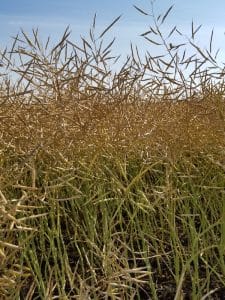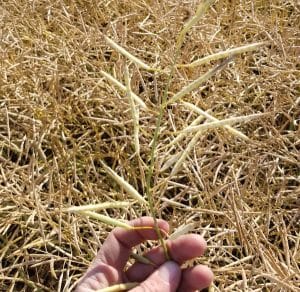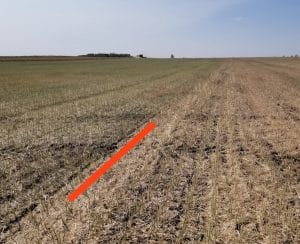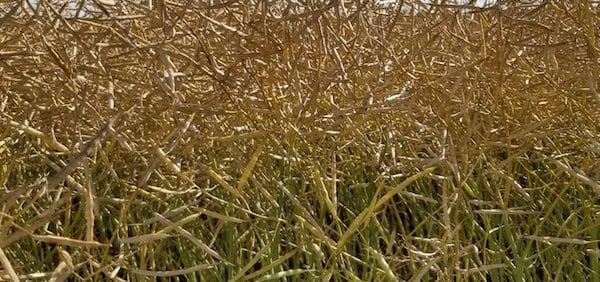How many days delayed am I going to be with straight combining versus swathing? It depends on your expectation of “ready”.
Do you want plants and pods dried down to the same point as a swathed crop? If yes, you might be waiting a while…if you didn’t use a pre-harvest aid. But you don’t have to wait that long. Canola seeds can be ready to harvest even if pods and stems are a little greener than you’d expect.
To determine whether a crop is “ready” to harvest, stalk dry down, pod dry-down, and seed moisture all need to be considered. Which is most important to you? What are you compromising by focusing on one and not the others?
Consider these three approaches
Is it most important to reach an acceptable seed moisture? The advantage of going by seed moisture is that straight combining will start earlier. When a crop is in the bin it is not at risk of weather events in the field. The disadvantage is that combining may be less efficient. Green plant material may limit capacity, plugging may be more frequent, threshing losses may be difficult to reduce, and green material may be difficult to chop and spread, causing issues for future operations in that field. Green leathery pods will often pass through the rotor and be spit out the back, unthreshed. This can be hard to correct without cracking good seed.
Is it most important that pod material is completely dried down? This approach should strike a balance between acceptable seed moisture (not too low) and a decent amount of plant material dry down for ease of harvest. Unthreshed losses should not be an issue. Disadvantages are that it takes longer to reach this stage, the pods will start to become more susceptible to shattering (most notably in non-shatter tolerant varieties), and stalk material is likely still going to be on the green side, which can drain the machine capacity. Watch your sample for green material that would lead to greater storage risk.
Is it most important that stalks are completely dried down? The key advantage with this approach is a much easier and faster harvesting experience. The disadvantage is that it can take significantly longer to reach this stage (especially later in the season or in areas that tend to be wet and/or cool) or it could require a pre-harvest aid to achieve. Seed moisture could also end up very low. The plant material will tend to break down a lot more readily, and the primary loss point may end up being the cleaning sieves (chaffer or shoe) rather than the rotor.



Dig deeper
- Scenarios: Swath or straight combine?
- Pre-harvest desiccant: Needed after a frost?
- Straight combining canola: Success factors
- Natural dry down? Or pre-harvest spray?
- PAMI study – including environmental effect on combine losses
- Library of Canola Watch straight combining articles
- Canola Digest: What we know about straight combining canola

